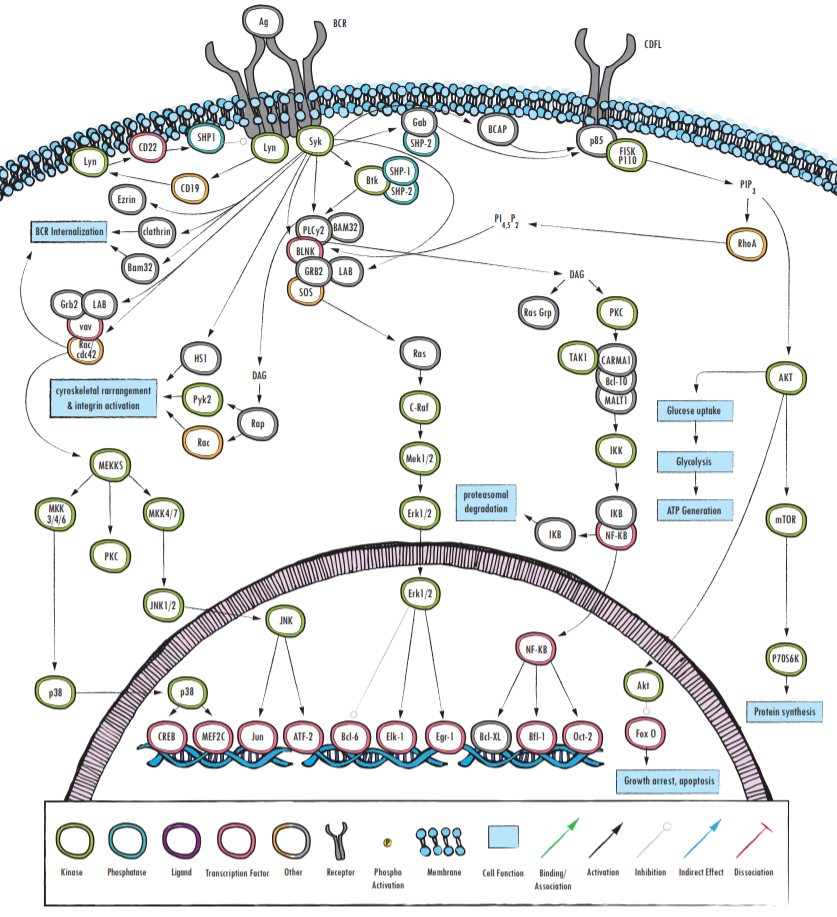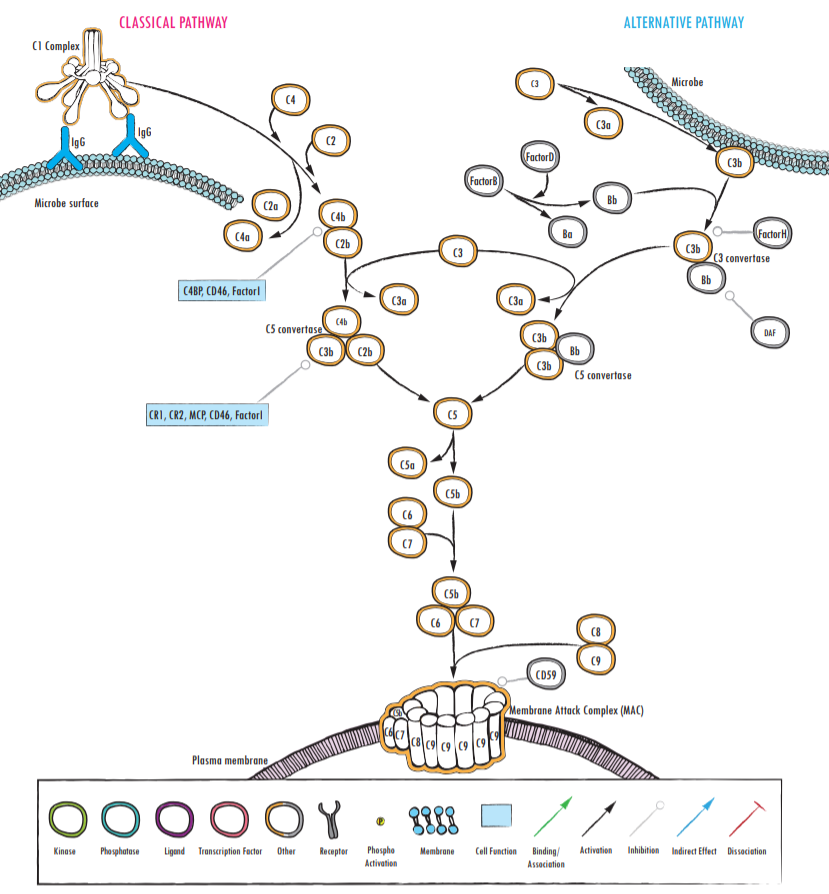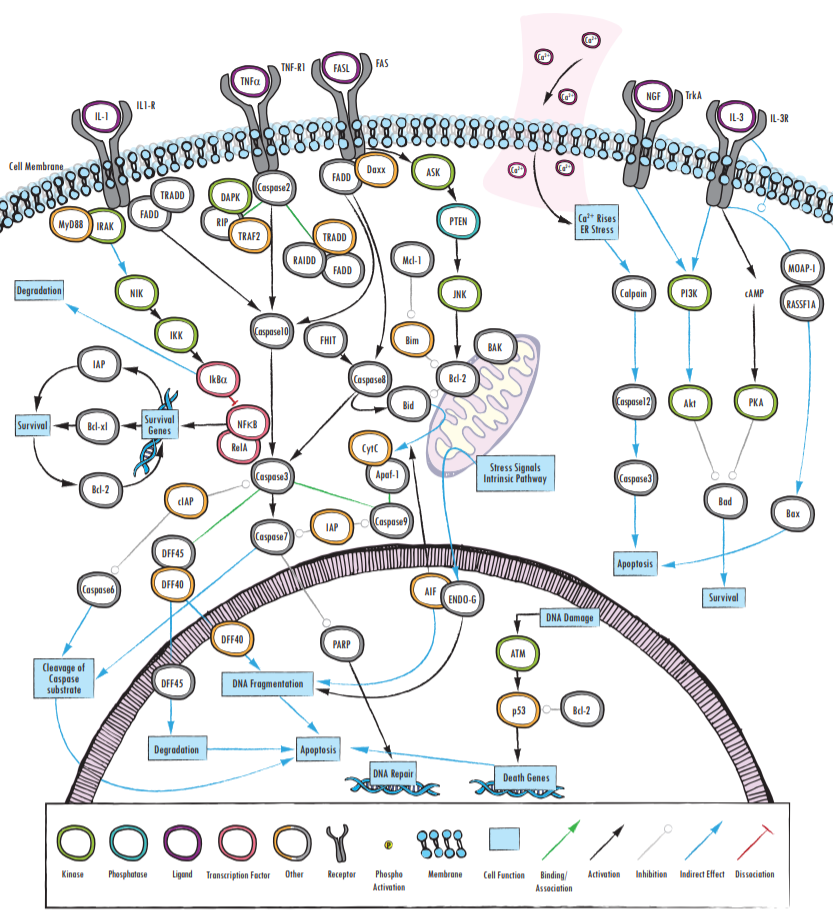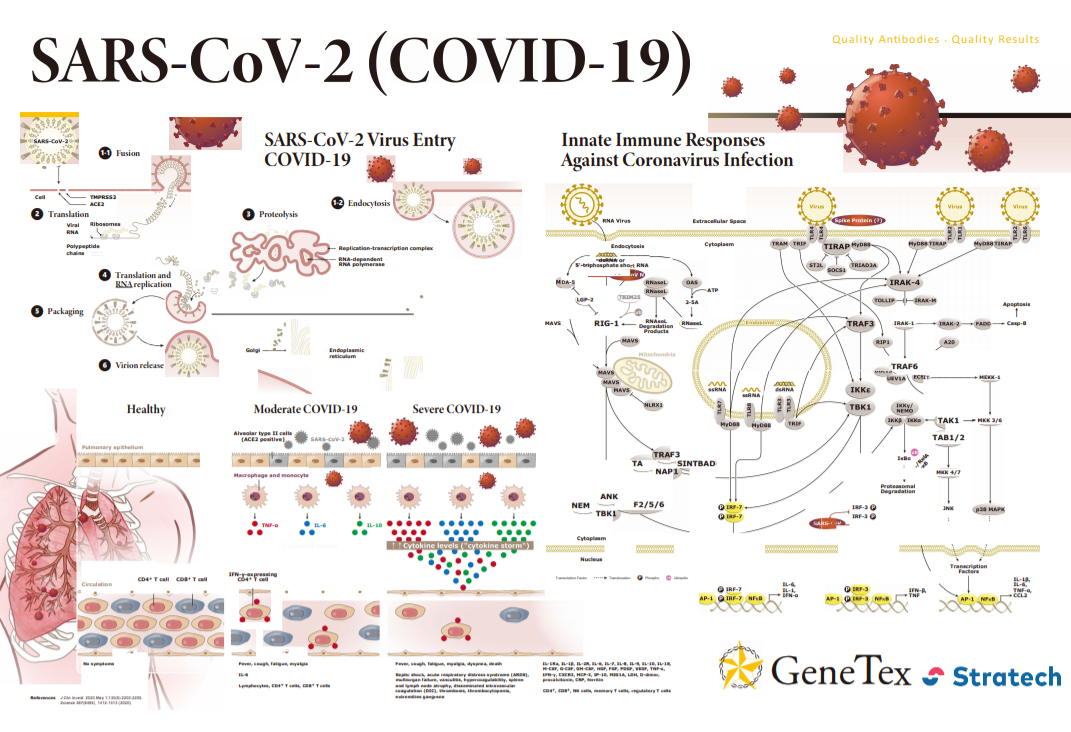When a virus infects a host it invades the cells of its host in order to survive and replicate. Once inside, it becomes invisible to the infected cells of the host immune system. The infected cells however employ a system that allows them to reveal the presence of the virus – they use molecules called class I major histocompatibility complex proteins (MHC class I) to display fragments of the invading viral proteins onto their cell surface.
One type of immune cells is a T cell called cytotoxic T cell that specifically recognises these antigenic peptides bound to the MHC complex via specific cell surface receptors (TCRs) warming the host of a viral infection. The T cell then releases cytotoxic factors to kill the infected cell and prevent further propagation of the virus.
Some viruses have adapted and stop MHC molecules from displaying viral peptides to the cell surface. In response, another type of immune cell called natural killer cell (NK), targets and kills the cells that have a reduced number of MHC class I molecules on their surface. Cytotoxic factors are stored in both cytotoxic T cells and NK cells granules and are released upon contact with an infected cell. One of these cytotoxic proteins, perforin, can make pores in cell membranes which allow entry of other mediators like granzymes to facilitate the destruction of the cell. Once inside the target cell, these cytotoxic factors initiate a process known as programmed cell death or apoptosis. Another released cytotoxic factor is granulysin, which directly attacks the outer membrane of the target cell and destroys it by lysis.
As a result of a viral infection, cytotoxic T cells commonly synthesise and release cytokines. Cytokines include interferon-gamma and tumour necrosis factor-alpha. Their release serves as a transfer signal from the T cells to neighbouring cells to amplify the cytotoxic response against the invader.
Virally infected cells also produce and release small proteins called interferons, which prevent replication of viruses. They also act as signalling molecules that warns nearby cells of a viral presence which trigger an increase in their MHC class I molecules synthesis and in turn the activation of circulating cytotoxic T cells.
Viruses can also be removed from the host by antibodies before they get the chance to infect a cell. These antibodies either specifically neutralise the virus, or cause agglutination of the viral particles which are then more easily targeted by immune cells. Antibodies can also eradicate viruses via the activation of phagocytosis process or of the complement system, which can damage the envelope of some types of virus.





